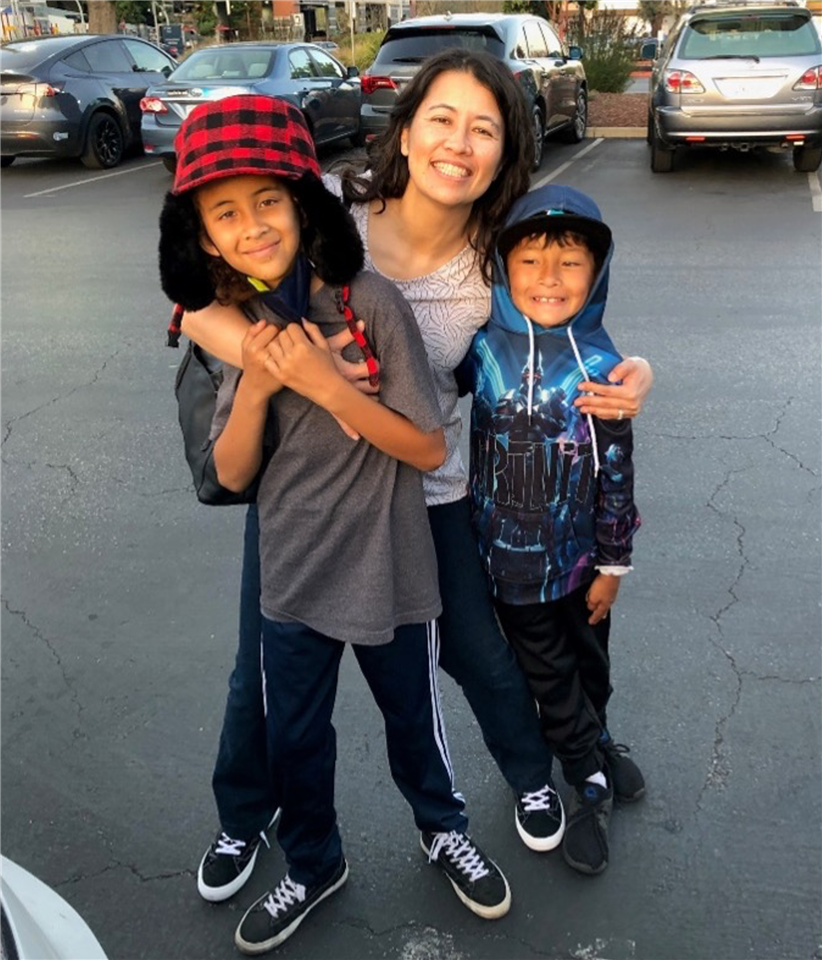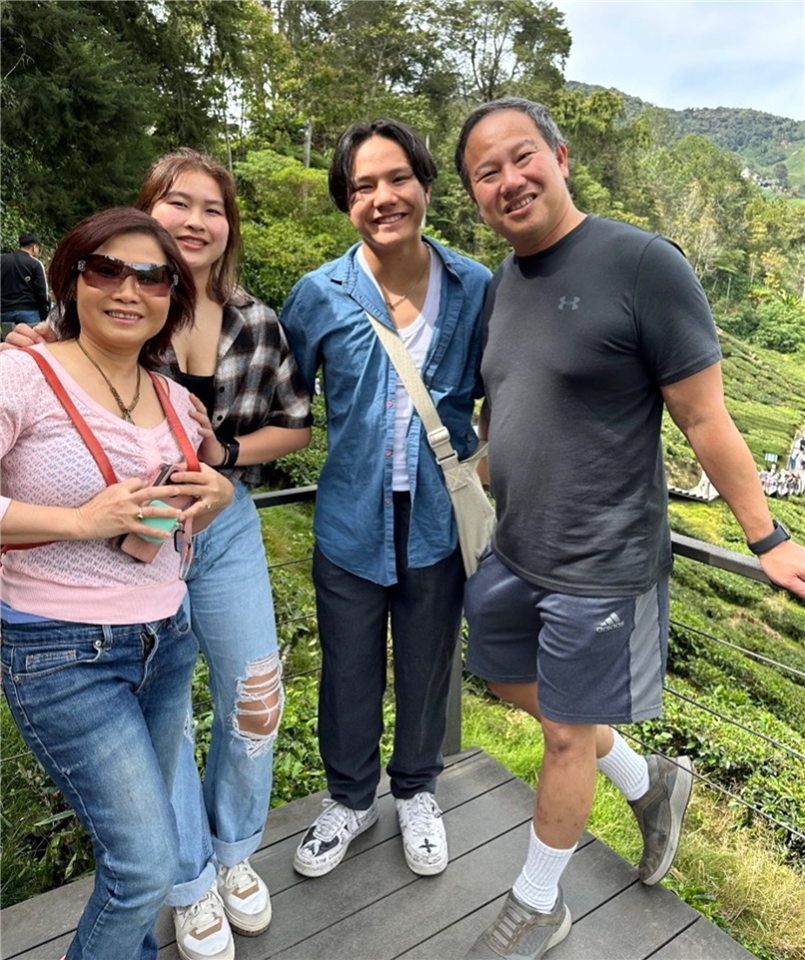DEI@Cadence: Asian American and Pacific Islander (AAPI) Heritage Month Spotlights
Written by Tomomi Glover, sr. group director and associate general counsel; Lawrence Loh, sr. customer engagement group director; and Claire Ying, Software Engineering group director and AAPI Inclusion Group lead, Cadence.
Diversity, equity, and inclusion (DEI) are not just words but values that are exemplified through our culture at Cadence. In the DEI@Cadence blog series, you’ll find a community where employees share their perspectives and experiences. By providing a glimpse of their personal stories, we celebrate our One Cadence—One Team culture and the importance of sustaining it as we learn from diverse perspectives.
As we celebrate Asian American and Pacific Islander Heritage Month (AAPI), we’re excited to feature our incredibly talented AAPI-identifying employees. AAPI Heritage Month is a time to reflect, celebrate and recognize the incredible influence the Asian and Pacific Islander community has on our history, culture and achievements. At Cadence, we honor our Asian American and Pacific Islander employees and the role they play in our organization and society.
Tomomi Glover
As Sr. Group Director and Associate General Counsel on Cadence’s Legal team. I have the privilege of leading the group that covers litigation, employment, Environmental, Social, and Governance (ESG), and compliance. Reflecting on what it means to me to be Asian American this AAPI Heritage Month, I realize it’s complex.
I was born and raised in San Jose, California as an only child to my Japanese mom and Caucasian dad. Growing up, I spent about a month every summer returning to Japan with my mom to visit family. 里帰り(satogaeri), or returning home, as they call it in Japanese. My mom came from the rural Iwate prefecture where my grandpa was a Soto Zen Buddhist priest, a position passed down in families to the eldest son and now held by my uncle. My dad recently sent me a video he found called Life of Zen, which explains Soto Zen Buddhism. My mom’s family temple was much smaller and more modest, but the practices followed are similar and include meditation, chanting, waking early, a daily schedule with humble work like cleaning the home, and a life of service to the community, including hosting ceremonies and frequent guests. I loved everything about visiting my Japanese family and experiencing the Japanese culture, from preparing for Obon, a holiday to honor ancestors, to fireworks for summer festivals, and all the wonderful food. Maybe it was because I didn’t get access to Japanese things throughout the year in America, but my aunt used to joke that I liked those things that even her kids didn’t—like 納豆(natto), or sticky fermented soybean.
Japanese culture has always been a big part of my life, but I was also always the different one in my family—the American one to my Japanese family and the one with the Japanese mom to my American family. I was lucky to have been embraced by both sides, which is not always the case for multicultural children. I also consider myself lucky to have grown up in San Jose, among children from many cultural backgrounds. For example, it wasn’t that odd for me to bring おにぎり(onigiri), or rice balls, to school for lunch when I got tired of sandwiches.
Growing up, I had friends that participated in Japanese American and Asian American groups, but I decided not to participate for several reasons. I felt, maybe, I didn’t fit in because I was only half-Asian. I thought my situation with my mom differed from families that had immigrated earlier, and my dad also encouraged me not to see the world by race. As I’ve gotten older, my views have evolved, and I have been participating in Asian-American groups and events more—partly for the benefit of my two boys who are more mixed than I am. I have immense gratitude for the fact that my boys have been able to learn so much about their Japanese heritage through local Japanese American schools and programs. I didn’t think I had anything left to learn (always a mistake!) when it came to my Japanese heritage, but it was through these programs that I learned we have a family crest or “mon” and was able to speak with our Japanese family about it together with my boys.
I also realize now that I was privileged to have felt accepted. My earlier decision not to engage more with inclusion groups left me somewhat unaware of the community's issues. It was not until I began my professional career that I started to notice small slights. Once, when the courtroom was being closed to only attorneys and parties for a confidential matter, I was asked to leave by a well-meaning bailiff. It took me a minute to realize he was asking me—despite the suit I was wearing—to leave because he didn’t think I was a lawyer, there on behalf of a client. I was glad I had my business and bar cards with me that day. I’ve also been told several times by different strangers I’ve chatted with—often in line at places like the post office or grocery store—that I “don’t look like a lawyer.” I’ve usually bantered back saying something along the lines of, “Thanks for the compliment.” Though, it makes me wonder: what should a lawyer look like? And why does that matter? Being a Japanese American woman is part of who I am and how I look. To the extent it matters, I think my Zen roots help me maintain calm in my line of work and better serve my clients.
As someone of mixed heritage, who never quite felt like they fit with any one group, I have always been passionate about supporting inclusion. Yet, these experiences further fueled my desire to do anything I could to support diversity, equity, and inclusion efforts, particularly in the professional context and as an obligation to future generations. These experiences have also informed my work in positions prior to Cadence, including a legal education startup aimed to improve diversity in the legal practice and the experience of attorneys from diverse backgrounds. In my work at Cadence, they have served me in my roles advising the HR team and reviewing the ESG report.
I am far from alone in these types of experiences, and with the rise of violent hate crimes against the AAPI community, these sorts of slights, of course, do not compare. However, if I had one wish for this AAPI Heritage Month, it is for everyone to think about their preconceptions of people and to get beyond simple stereotypes. There is so much diversity among the AAPI community alone, and to combat hate we must get to know others with backgrounds different from ourselves. I hope everyone takes the time to get to know their AAPI colleagues (and their other colleagues, too!) because identity is complicated, and there is beauty and community in getting to know each other’s complexities.
Now, over to my colleague Lawrence Loh for his experiences.
Lawrence Loh
I am Lawrence Loh, sr. customer engagement group director from the Product Engineering (PE) team of the System Verification Group (SVG). I was born and raised in Malaysia as a third-generation Chinese Malaysian. I have been living in the United States for over 30 years and am a proud, first-generation Chinese American. My work at Cadence allows me to interact with a diverse group of people from many different countries. I also have the chance to visit many places, both within the United States and abroad. Even though famous landmarks are interesting, the most intriguing part of this opportunity is learning about each diverse group's culture. I firmly believe that taking the time to understand different cultures not only makes us better team members but also allows us to appreciate what each culture can teach us.
As an Asian American, food is always an important aspect of my life. I am adventurous in that I will always do my best to try food from different cultures. I particularly love trying the local street food whenever I am in Asia. Gatherings with family and friends are also often centered around food, a passion that my wife and I are proudly passing on to my two wonderful children.
Although I appreciate and respect all cultures, I am still very proud of my Asian heritage. Growing up, I valued the presence and closeness of families, where we believe the ultimate success is bringing up the next generation that continues to persevere while putting family first. I remember the stories of my parents and grandparents, where my grandparents escaped from China to Malaysia with nothing but a set of clothes. Without much education, they raised my parents who eventually became teachers. My parents also did not have it easy. Both my parents did not have money to attend high school. My father self-studied while my mother wrote an article in the newspaper at elementary school. She ended up getting help from someone that sympathized with her situation and paid for her high school education. Therefore, I value educational opportunities and vowed not to take any of those for granted. Although I had to leave my hometown to pursue college in the United States, it was not a disadvantage but a great opportunity. Even though I lacked fluency in English and historical knowledge of the United States, I more than made up for that with the values my parents instilled in me—to work hard and go after each opportunity.
Finally, I am very fortunate to be in the United States. Even though things are not perfect, and never will be, I still believe that most people do care for one another. For a better tomorrow, we need a better today, and that can only happen when we all do our part to appreciate one another, regardless of culture, ethnicity, or any other differences we may have.
Want to Subscribe?
Visit Cadence’s “Corporate and Culture” blog channel and click on Subscribe by Email at the top. After submitting your email address, you will immediately receive an email to activate your subscription. Once you complete the request, new blog post notifications will be delivered to your mailbox. Enjoy!



